-
More American civil engineers deployed to Japan to study damage
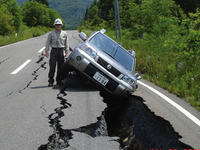
Last week the American Society of Civil Engineers (ASCE) deployed two more disaster assessment teams to Japan to study the damage wrought by the 11 March earthquake and tsunami; the two teams, the third and fourth deployed by ASCE, will tour the damaged areas which include the approximately 292 square miles inundated by the tsunami; one team will focus on examining the effects that the tsunami and earthquake had on port structures; the other team will focus their efforts on investigating the impact of the earthquake and tsunami on coastal structures like tsunami walls, breakwaters, and seawalls
-
-
Historic, desperate measures to control Mississippi River
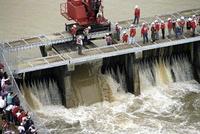
The historic levels of water swelling the Mississippi River required the Army Corps of Engineers to take historic measures to prevent catastrophic flooding of Baton Rough and News Orleans: first, the Morganza control structure, located 186 miles upriver of New Orleans and completed in 1954 as part of the Army Corps of Engineers’ broad flood-protection upgrades in the wake of the Great Flood of 1927, was opened for only the second time to allow water to flow out of the river and into the Atchafalaya basin, a designated flood relief area; the Corps says that Saturday marked the first time in history that all three floodways built by corps after 1927 flood — the Morganza Floodway, the Bonnet Carre Spillway, and the Birds Point floodway in Missouri — have been in operation at the same time; about 25,000 people and 11,000 structures are in harm’s way, as up to 25 feet of flooding is expected in a 3,000 square-mile area of Louisiana
-
-
Early warning system helped save lives in Japanese quake

Japan has spent millions of dollars to build a sophisticated early warning system for earthquakes and experts say that it helped save millions of lives and mitigated the damage from the 11 March earthquake and tsunami; while the massive 9.0 magnitude earthquake and tsunami flattened much of northeastern Japan, the damage would have been far worse had Japan not had its early warning system in place; the system can provide anywhere from ten to thirty seconds of advance notice before an earthquake strikes giving Japan’s residents just enough time to slow down trains so they do not derail, shut off dangerous machinery, and send people to find cover
-
-
Severe tropical droughts as northern temperatures rise
A sediment core from a South American lake revealed a steady, sharp drop in crucial monsoon rainfall since 1900, leading to the driest conditions in 1,000 years as of 2007 and threatening tropical populations with water shortages; a 2,300-year climate record researchers recovered from an Andes Mountains lake reveals that as temperatures in the Northern Hemisphere rise, the planet’s densely populated tropical regions will most likely experience severe water shortages as the crucial summer monsoons become drier
-
-
Swollen Mississippi River to be closed for traffic as of Monday
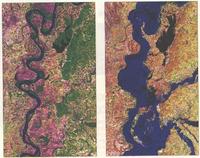
Swollen by weeks of heavy rain and snowmelt, the Mississippi River has been breaking high-water records that have stood since the 1920s and 1930s; it is projected to crest at Vicksburg, Mississippi, on 19 May and break the mark set there during the historic Great Flood of 1927; the crest is expected to reach New Orleans on 23 May; officials with the Port of New Orleans said the Coast Guard may close the river to ships as early as Monday, halting traffic on one of the world’s busiest commercial waterways; barges headed south from the U.S. heartland to the Port of South Louisiana at Reserve, upriver from New Orleans, would be unable to reach grain elevators; massive ships that carry U.S. corn, soybeans, and other crops out of the country would be unable to move
-
-
New slippery slopes detection system developed
One result of climate changes has been that the number of avalanche threats has been increasing in the Alps and other alpine regions, with fatal consequences for people and infrastructures; continuous monitoring of every endangered area has been lacking until now because of high costs and manpower requirements; German scientists have now developed an inexpensive system, which, with the help of several technologies, can continuously monitor slopes, assess changes, and provide early warnings to communities potentially affected by landslides
-
-
Turkey plans two earthquake resistant cities to move residents from vulnerable Istanbul
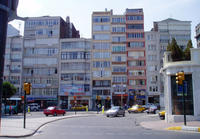
To encourage residents to move away from seismically unsafe neighborhoods, Turkey’s government recently announced that it will begin building two earthquake-resistant developments near Istanbul; the city of more than twelve million people currently sits near a major fault-line that could potentially kill thousands in the event of a major earthquake; engineers and seismic experts warn that Istanbul’s poor construction, shoddy city planning, and overcrowding would result in many fatalities in the event of an earthquake; officials plan for the new urban centers to be home to roughly 1 million residents each; any move to the new settlements would be entirely voluntary
-
-
Lompoc, CA prepares for the big quake
Following the 11 March earthquake and tsunami that struck Japan, Lompoc, California is evaluating its own earthquake preparation should a similar 9.0 magnitude strike; while Lompoc may be safe from a tsunami, the town is woefully unprepared for a major earthquake; Bruce Taylor, Lompoc’s former building safety inspector, bluntly stated that many buildings would not stand up to a major earthquake; to ensure that its buildings are seismically safe, the city of Lompoc is offering incentives and funding to help property owners evaluate their buildings and conduct seismic retrofits
-
-
Missouri Governor pledges $25 million for flood relief
On Tuesday, Missouri Governor Jay Nixon pledged $25 million in state aid to help cities and counties rebuild following crippling floods throughout the southern half of the state; it is unclear whether the state will be forced to make budget cuts in order to afford the disaster spending; on Monday President Obama issued a major disaster declaration for five Missouri counties; under the declaration residents of the five counties are eligible to apply for federal assistance for the costs of temporary housing, home repairs, and loans to cover uninsured losses
-
-
Australian floods and cyclone cost economy $6.6 billion
The devastating floods and cyclone that ravaged Australia last summer has cost the country’s economy more than $6.6 billion dollars; as the country begins to rebuild, the economy must deal with the loss of nearly $9 billion dollars, half a percentage point of real GDP, in production revenues, primarily from the coal and agriculture industry; the government plans to spend nearly $7 billion over the next six years to help communities rebuild, despite an expected loss in tax revenues of $1.75 billion
-
-
Tiltable-head robots adept at navigating disaster debris
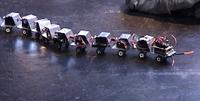
Search and rescue missions have made the headlines in the last eighteen months, following the earthquakes in Haiti and Chile, the floods in Pakistan and New Zealand, and the tsunami in Japan; machines able to navigate through complex dirt and rubble environments could have helped rescuers after these natural disasters, but building such machines is challenging; Georgia Tech researchers have now built a robot that can penetrate and “swim” through granular material
-
-
World's largest reinsurer posts lower losses than expected

The world’s largest reinsurer, Munich Re, posted smaller than expected losses for the first quarter of this fiscal year; the insurance giant warned investors for a “clearly negative” quarter as a result of insurance claims following the devastating earthquakes in Japan and New Zealand this year; but, its net losses were mitigated in large part by smaller tax bills as a result of the natural disasters; industry analysts expected the reinsurance giant to post a loss of roughly 1.6 billion Euros ($2.28 billion), however the firm defied expectations posting a net loss of 947 million Euros thanks to a favorable tax gain of 612 million Euros due to its quarterly losses
-
-
Difficult decisions for Japanese living near Fukushima
Japanese residents living just outside the twelve mile evacuation zone of the Fukushima Daiichi power plant have struggled with their daily lives as the plant has continued to spew radiation; while Japanese officials have said that the radiation levels outside the evacuation zone are not high enough to cause observable health risks, many residents and scientists are still worried as radiation is still several times above the normal level; experts acknowledge their limited understanding of the health risks for long term exposure to low doses of radiation has made it difficult for scientists and policy makers to come to an agreement on what levels of radiation are safe and what areas need to be evacuated
-
-
Japan attempts "cold shutdown" at reactor no. 1
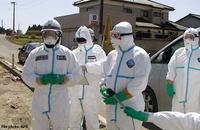
Officials at the Tokyo Electric Power Company (TEPCO) hope to bring reactor no. 1 at the beleaguered Fukushima Daiichi nuclear plant to a “cold shutdown” by the end of the week; plant operators will attempt to bring the temperature inside the reactor below the boiling point of water so that it will no longer produce radioactive steam; the building housing reactor no. 1 must be vented so that all the radioactive air that has accumulated is released allowing workers to approach the reactor; once inside workers will inject cold water into the reactor’s primary containment structure; injecting tons of water into a damaged containment unit that houses uranium makes some scientists uneasy
-
-
DHS allocates $25.5M for border communications
DHS recently announced that it would spend $25.5 million on additional security measures along the border; the money will be allocated to states as part of the Border Interoperability Demonstration Project (BIDP) which is designed as a one-time competitive grant program to develop innovative solutions that improve emergency communications for first responders and law enforcement agents; seven states including California, Maine, and Texas will receive grants
-
More headlines
The long view
The Surprising Reasons Floods and Other Disasters Are Deadlier at Night
It’s not just that it’s dark and people are asleep. Urban sprawl, confirmation bias, and other factors can play a role.
Why Flash Flood Warnings Will Continue to Go Unheeded
Experts say local education and community support are key to conveying risk.
